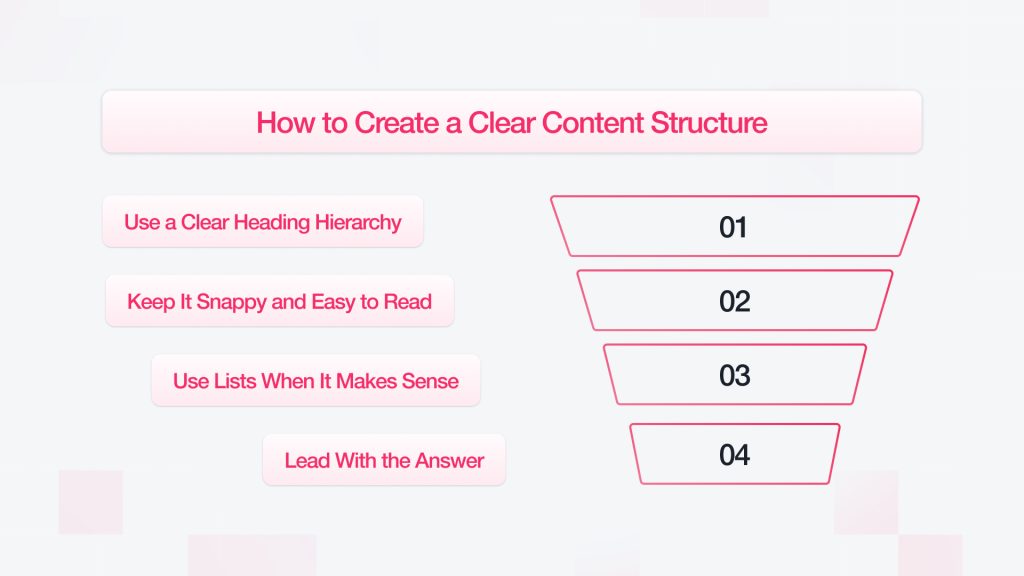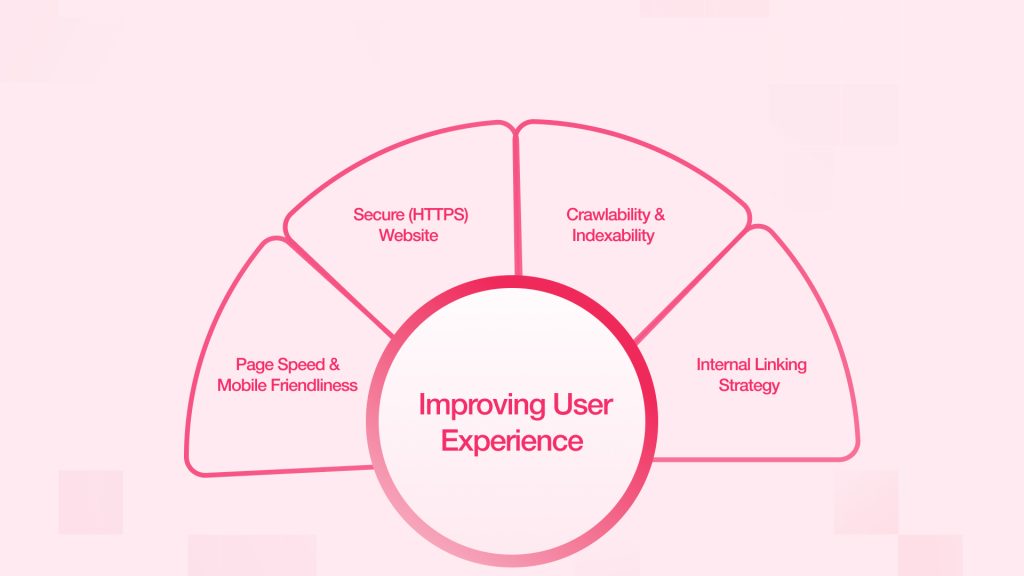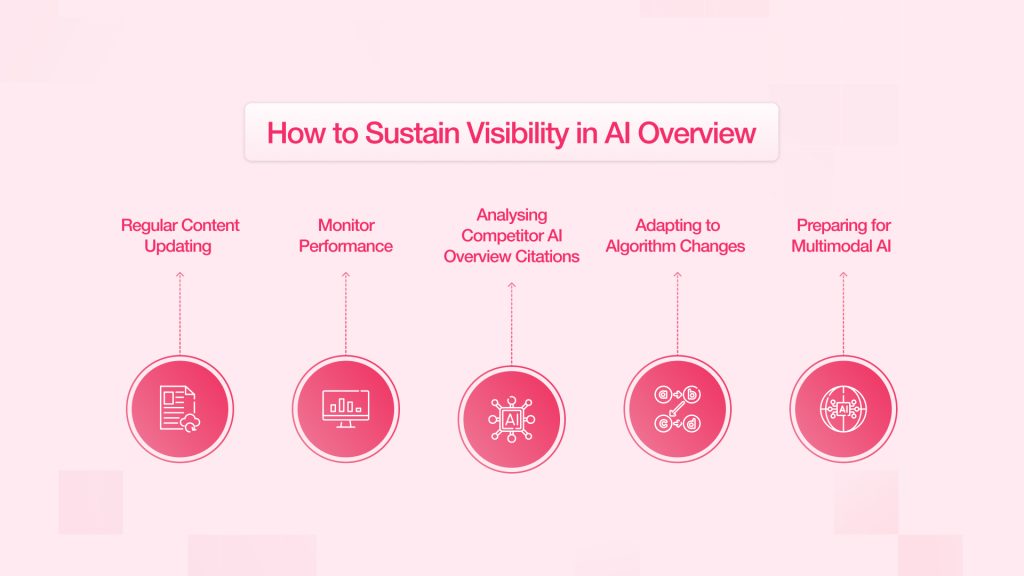How to Optimize Your Website for AI Overviews?
Things are shifting fast in the online world—especially when it comes to search. You’ve probably noticed Google rolling out these new AI Overviews. They’re changing the way people discover information, and yeah, it’s kind of a big deal.
- July 1, 2025
- by Tarun


How to Optimise Your Website for AI Overviews
There’s no denying it—search is changing, and fast. With Google rolling out AI Overviews (yeah, those summaries at the top of the page), powered by large language models and baked into the whole Search Generative Experience (SGE) thing, the way people find info online is shifting in a big way.
Instead of the usual list of ten blue links, users are getting these quick, AI-generated snapshots right up front. For website owners, that’s a bit of a double-edged sword. It’s a challenge for sure, but also a big opportunity—if you know how to play it right. Getting your content into those AI summaries isn’t just a nice bonus anymore—it’s pretty much essential if you want to stay visible and relevant online.
In this article, we’re going to break down AI Overviews—what they are, how they work, and what they mean for your site. Think of this as your go-to guide for navigating this new search landscape. Our goal is simple: give you practical, easy-to-follow steps to help get your content noticed in these AI-powered results. Because at the end of the day, you’ve got great stuff to share, and we want to make sure it reaches the right people.
Understanding AI Overviews and Their Impact
AI Overviews are those quick, to-the-point summaries that now pop up at the top of Google’s search results. They’re powered by AI and designed to give people immediate, clear answers without making them click through a bunch of links. Basically, Google pulls information from various websites, combines it, and serves up a neat little summary right there on the search page. You’ll often see links under the summary showing where the info came from—kind of like a little shout-out to the original sources.
AI Overviews are all about giving people straight-up answers—fast. Instead of clicking around through a bunch of links, users can get what they need right away. But here’s the thing: this shift is already shaking up traditional SEO in a big way, and yeah, the impact is very real (and measurable).
Click-Through Rate (CTR) Alterations
Some studies are already showing a drop in click-through rates (CTR) for those classic organic search results—especially when it comes to informational, non-branded searches. Basically, if someone gets the answer they’re looking for right in the AI Overview, there’s a good chance they won’t bother clicking through to any actual websites.
Increased Competition for Visibility
Since AI Overviews pull together info from different sources, the race to actually be one of those sources is heating up. If your content gets cited, it can mean a big boost in visibility. But if you’re left out? You might see a dip in traffic, especially if users are getting everything they need straight from the overview.
Emphasis on Content Quality and Authority
Google’s still all about high-quality, trustworthy content—and that hasn’t changed with AI Overviews. In fact, it matters even more now. Since the AI is pulling info together to create summaries, it’s got to rely on sources that are solid, accurate, and authoritative. So, if your content checks those boxes, you’re way more likely to be included in those top spots.
Shift in User Behaviour
People are getting more and more used to getting quick, straight-to-the-point answers right from the search page. Because of that, the way they search is changing too—queries are becoming more natural, more like the way we actually talk. Think of questions and full sentences instead of just keywords. And those kinds of searches? They’re perfect for triggering AI Overview responses.
Noticing this shift is the first step. Once you see how search behaviour is evolving, you can start shaping your content strategy to work with these AI Overviews, not against them.
Fundamental Principles for AI Overview Optimisation
Optimising for AI Overviews isn’t about reinventing the wheel—it’s really just an extension of SEO best practices. The basics still matter clear structure, solid info, and trustworthy sources. But there are a few extra layers now, especially when you think about how AI reads, understands, and pulls together content. The goal is to make your content super clear and easy for AI to process—and just as importantly, easy to verify.
Content Quality and Comprehensiveness
If there’s one thing that really matters when it comes to AI Overviews, it’s the quality and depth of your content. These AI systems are built to look for info that’s not just surface-level—they want the full picture. That means well-researched, thorough content has a much better shot at being featured.
- Authoritative & Trustworthy Content: Your content needs to be solid. We’re talking accurate, factual, and backed up with real evidence. When it comes to sensitive topics—like health, finances, or anything else that falls under the “Your Money, Your Life” (YMYL) category—Google gets even more serious. For these, it relies on E-E-A-T: Experience, Expertise, Authoritativeness, and Trustworthiness. Make sure your content is written (or reviewed) by experts, include credible sources, and build a track record of reliability. The more you can show that you know your stuff, the more likely Google’s AI is to trust and highlight your work.
- Comprehensive Coverage: AI Overviews tend to favour content that really digs into a topic and leaves the reader with fewer questions, not more. Think about what someone might naturally want to know next and build that right into your content. When you can anticipate those follow-up questions and address them upfront, you’re giving the AI exactly what it’s looking for: a well-rounded, complete picture that’s genuinely helpful.
- Original Research and Unique Insights: AI models work with data that’s already out there—they can’t pull fresh info out of nowhere. That’s where you come in. If you’re sharing original research, exclusive data, or offering a new perspective on a topic, that’s a huge advantage. It gives AI something it can’t generate on its own, making your content way more valuable. Essentially, you’re providing the kind of info that sets you apart and makes your page a go-to source.
Need SEO guidance and support to boost your website rankings?
Our Experts Can Help!
Clear Content Structure and Presentation
How you structure your content really matters—especially when it comes to helping AI understand and pull the right info.

- Use a Clear Heading Hierarchy: Think of your headings (H1, H2, H3, etc.) as signposts. They help organise your content in a way that makes sense, not just to people, but to AI too. A clear hierarchy tells the model how different sections relate to each other and what the main takeaways are. When everything’s laid out logically, it’s way easier for AI to find and use the key points—boosting your chances of getting featured in an overview.
- Keep It Snappy and Easy to Read: When you’re explaining something complex, it helps to break it into bite-sized pieces. Stick to short, focused paragraphs—two or three sentences tops—and use clear, straightforward language. It’s not just easier for readers to follow—this stuff makes it a whole lot simpler for AI to pick out what’s important, too.
- Use Lists When It Makes Sense: Bullet points or numbered lists are your friends. They’re perfect for breaking down info in a way that’s easy to scan. Whether you’re comparing options, outlining steps, or just listing key facts, lists help both your readers and AI grab the main points fast.
- Lead With the Answer: When you’re answering a question, always put the main point or key takeaway right up front. That way, AI can spot what’s important right away and pull it into its summary without having to dig too deep.
Strategic Keyword and Topic Focus
Keyword research is still a big deal—but when it comes to AI Overviews, you gotta think a little bigger.
- Focus on Long-Tail and Conversational Queries: AI Overviews love to show up for those really specific, conversational queries—basically, the way people actually ask questions. So, instead of just going after short keywords, dig into those longer, question-style phrases that reflect how people naturally search.
- Topic Clusters and Semantic Relationships: Instead of hunting for keywords one by one, try thinking bigger. Organise your content into topic clusters. This means grouping related pieces of content around a central theme. It helps search engines (and AI) understand how everything connects, and it can boost your chances of getting featured in AI Overviews. Basically, you create a main “pillar” page that covers a broad topic, then write a bunch of supporting articles diving into related sub-topics. This way, you build up real authority around that subject, which AI models really pay attention to. It’s a smart way to show you’re the go-to source on a topic, not just a one-hit wonder.
- Anticipate User Intent: It’s really important to get what’s behind a search query—what’s the person actually looking for? Are they after info, trying to solve a problem, comparing options, or just trying to find a specific page? When you create content that hits right at that intent, you’re way more likely to get picked up in those AI Overviews. They love showing answers that really match what the user wants.
User Experience and Technical Consideration
A solid technical SEO setup and a smooth user experience (UX) are key for getting noticed in search results—and they play a big part in optimising for AI Overviews too.

- Page Speed & Mobile Friendliness: Everybody likes fast, mobile-responsive sites. Speedier sites that work great on mobiles would be much better in terms of user experience. These days, good user experience and mobile-first design are also a quality witness before Google. This added quality may well weigh into consideration of featuring in AI Overviews.
- Secure (HTTPS) Website: Having an HTTPS-secured site isn’t just for security—it’s also a ranking factor. It’s one of those basics that can’t be overlooked.
- Crawlability & Indexability: For your content to appear in search results, the crawlers must be able to find it. With a clean, user-friendly site, supported by a solid internal structure and the correct robots.txt file, you have just made it to be noticed.
- Internal Linking Strategy: A solid internal linking strategy is key. It helps spread page authority throughout your site and makes it easier for search engines to see how all your content pieces connect. The better your links are organised, the easier it is for both users and AI to navigate.
Sustaining Visibility in AI Overviews
In an AI-driven search, anything can change. Hence, optimising for AI Overviews is something you do for a while and then never again’s an ongoing process that demands constant attention and timely commercial adjustments.

Regular Updating of Content
Make it a habit to periodically review and update your content. Search engines love fresh, relevant content; therefore, additional stats, studies, or industry updates will keep your content truthful and useful.
Monitoring AI Overview Performance
Google Search Console doesn’t have a specific metric for “AI Overview clicks,” but you can still get a sense of how your content is performing by watching shifts in impressions and click-through rates (CTR) for the queries you know are triggering AI Overviews. It’s a bit of detective work, but it’ll give you a good idea of how things are going.
Analysing Competitor AI Overview Citations
Keep an eye on the competitors showing up in AI Overviews for your target keywords. Take note of how their content is structured, how deep they go into the topic, and how they present their info. This can help you spot gaps or areas where you can one-up them in your own strategy.
Adapting to Algorithm Changes
Google’s algorithms are always evolving, so it’s important to stay on top of any updates. Follow Google Search Central and trusted SEO resources to keep up with any new changes and tweak your strategy accordingly.
Preparing for Multimodal AI
AI isn’t just about text anymore—it’s moving into multimedia. Think about how your content might be consumed through voice search or by AI processing images and videos. To get ahead, make sure your visuals are easy for AI to find and understand. Descriptive filenames, solid metadata, and video transcripts are becoming more important than ever.
Exploring SEO and Digital Marketing for Your Business?
Our Experts Can Help!
Practical Steps for Implementation
To make these ideas work for you, here are some simple steps to follow:
Conduct an AI Overview Audit
Take a look at the content you already have on your site and see what could potentially show up in AI Overviews. Focus on the informational stuff that directly answers questions. These are the pieces that have the best shot at being pulled into those summaries.
Rethink Content Creation
Next time you plan new content, start by thinking about what the user is really looking for. Build your outlines around providing clear, direct answers and enough detail so that an AI could easily summarise it. The goal is to make your content AI-friendly from the start.
Refine Existing Content
Go through your top-performing pages and make sure they’re crystal clear, to the point, and comprehensive. Add or tweak headings, bullet points, and make sure the answers to common questions jump right out at readers. The easier it is to get the info, the better.
Implement or Verify Schema Markup
If you’re using schema markup, double-check that it’s still up to date and properly set up across your site. If you haven’t added it yet, definitely start using it where it makes sense—it’s a game-changer for helping search engines and AI understand your content better.
Build Authority Systematically
Building your site’s authority isn’t an overnight thing, but it’s worth the effort. Get reputable backlinks, earn mentions from trustworthy sources, and make sure your content creators’ credentials are clear. The more authoritative your site looks, the better the chances of getting picked up for those AI Overviews.
Measure and Iterate
Don’t just set it and forget it. Use analytics to see how things are changing in terms of traffic and engagement. Regularly check in on your performance and fine-tune your content and technical setup based on what the data is telling you.
Conclusion
The rise of AI Overviews marks a shift in search, the manufacturer of fortune for minted website owners. Nevertheless, a few new things must be considered by the webmasters; the basics are still the same: the most important thing is to provide high-quality, relevant content in an organised manner. Thorough content packaging, good organisation, and content that operates well with AI methods will keep the web in the limelight.
Mutually beneficial is the way to go, not trying to beat AI. If you create content that is clear, authoritative, and answers questions directly, you will help AI, and for sure end-users, to find your offer easily. Essentially, the future is about search clarity and usefulness; thus, if you keep an eye on these, you’ll already be set for long-term success.
 Shopify
Shopify

















